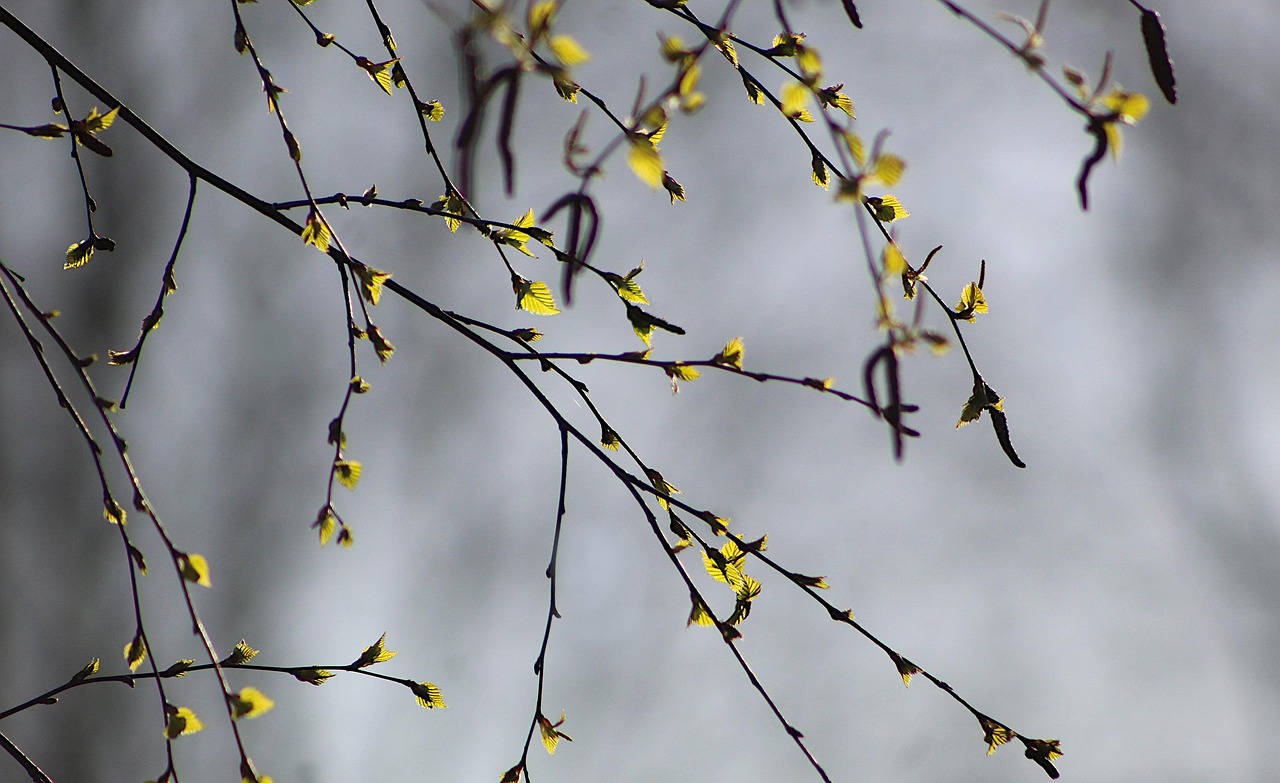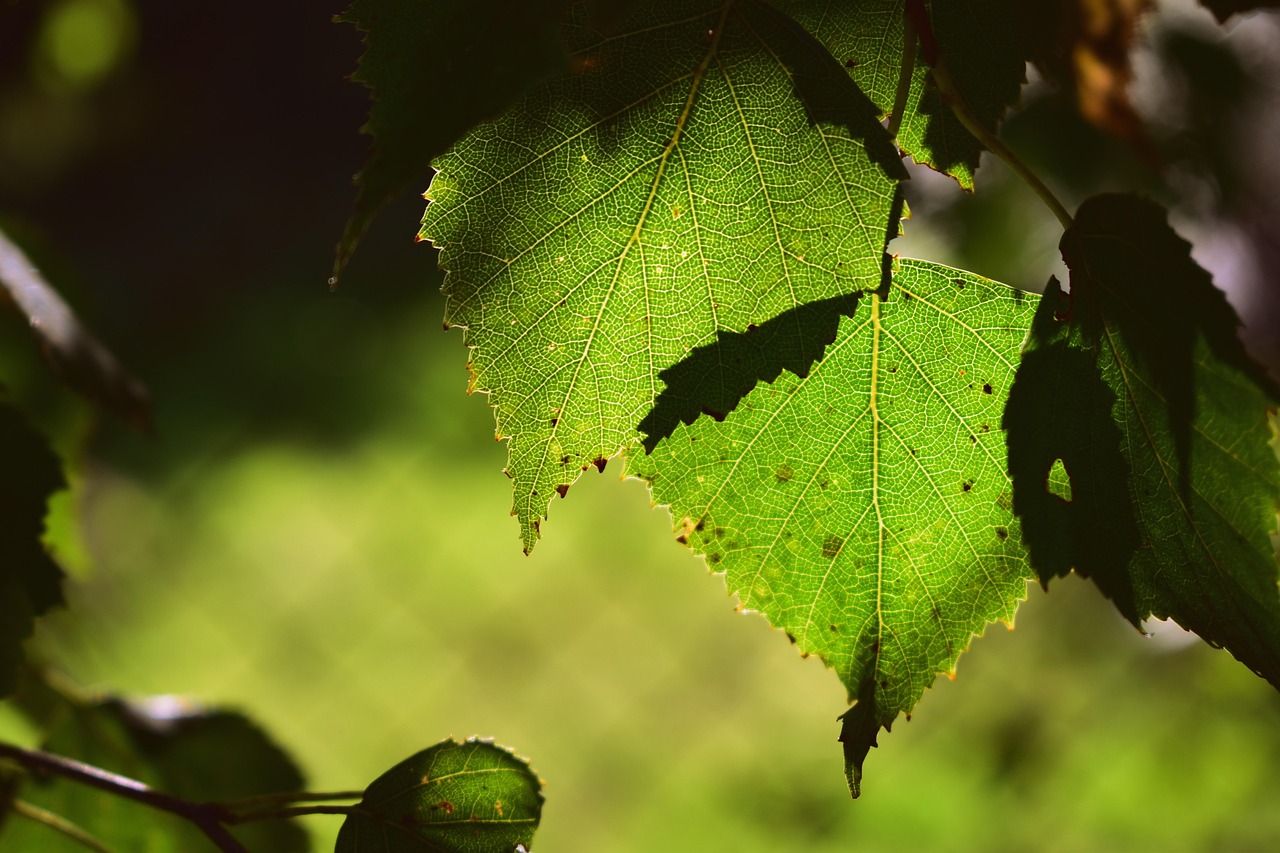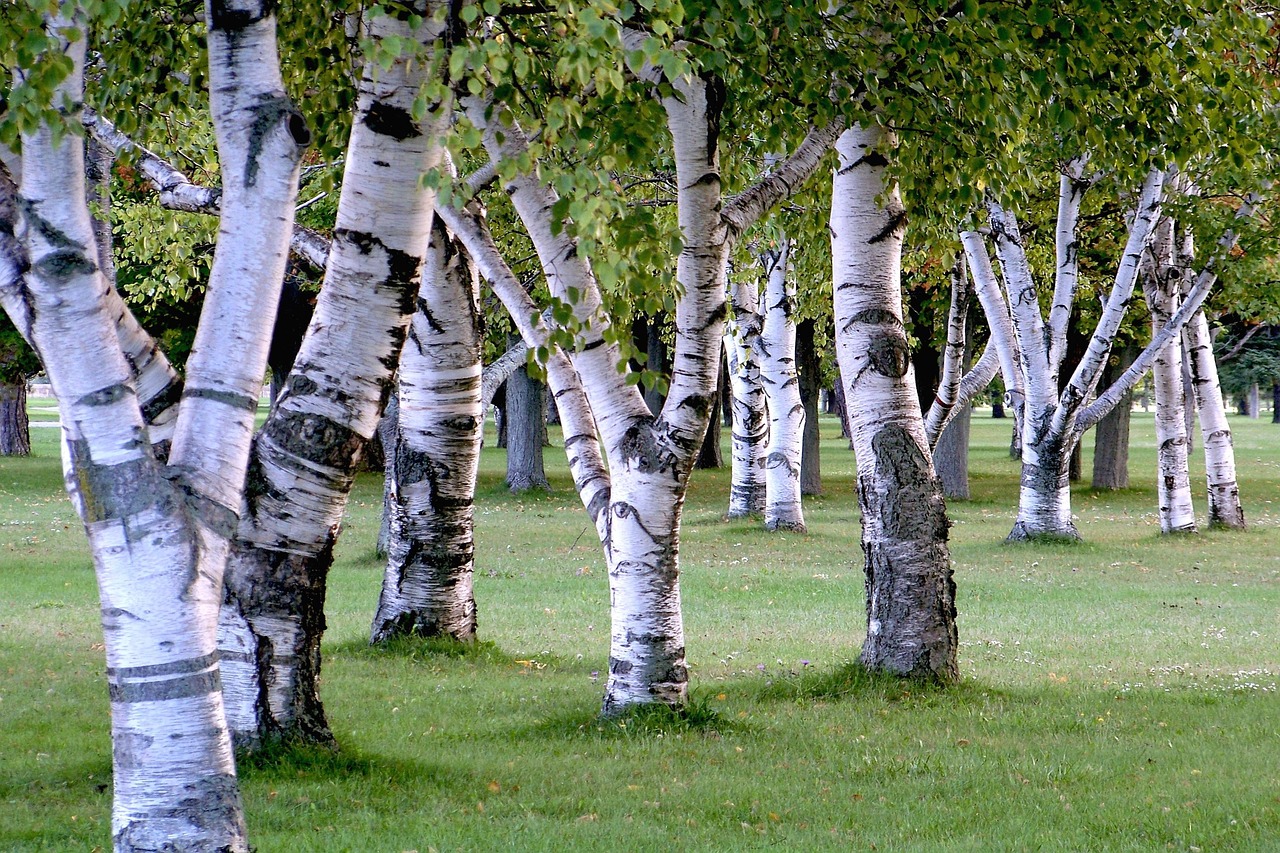Birch trees can be revived by identifying common issues such as pests, diseases, and environmental stressors. Implementing techniques like proper pruning, soil management, and pest control can significantly enhance their health and longevity.
Birch trees are cherished for their striking white bark and delicate foliage. They add beauty to landscapes and provide habitat for various wildlife. However, birch trees are susceptible to several problems that can lead to decline. As urbanization increases, many birch trees face challenges from environmental stressors, pests, and diseases. Recognizing these issues early is crucial for effective intervention.
Among the most common pests affecting birch trees are the birch borer and aphids. The birch borer, a wood-boring insect, can cause significant harm by tunneling into the tree. Aphids, on the other hand, feed on the tree’s sap, weakening it over time. Additionally, diseases such as leaf spot and powdery mildew can further stress these trees, resulting in unsightly foliage and reduced vigor.
Environmental factors also play a significant role in the health of birch trees. Soil quality, moisture levels, and exposure to sunlight are all critical elements that influence their growth. Birch trees thrive in well-drained, moist soils and require adequate sunlight for optimal health. Poor drainage or compacted soil can lead to root rot or other issues that hamper growth.
Identifying Common Issues

To effectively revive birch trees, it’s essential to identify the specific issues affecting them. Below are some common problems and signs to look out for:
| Issue | Signs |
|---|---|
| Birch Borer | D-shaped holes in bark, dieback of branches |
| Aphids | Sticky residue on leaves, curled leaves |
| Leaf Spot Disease | Dark spots on leaves, premature leaf drop |
| Root Rot | Wilting leaves, stunted growth |
After identifying the issues, the next step is to implement appropriate saving techniques. This may involve a combination of cultural practices and targeted treatments. For example, maintaining soil health through organic amendments can improve drainage and nutrient availability. Additionally, regular pruning can help remove affected branches and improve air circulation.
Pest management is also critical in saving birch trees. Insecticidal soaps or neem oil can effectively control aphid populations without harming beneficial insects. For birch borers, systemic insecticides may be necessary to provide adequate protection. However, it is essential to follow label instructions carefully when applying any treatment.
In conclusion, understanding the specific challenges facing birch trees is vital for their revival. By recognizing symptoms early and employing effective techniques, tree owners can ensure their birches thrive for years to come.
Understanding Birch Tree Health
To effectively manage birch tree health, it is essential to understand the biological and environmental factors that contribute to their well-being. Birch trees are typically found in temperate climates and thrive in specific conditions. By ensuring these conditions are met, tree owners can help prevent many issues before they arise.
Soil Requirements for Birch Trees
Soil quality plays a crucial role in the health of birch trees. Here are some important factors to consider:
- Drainage: Birch trees prefer well-drained soils. Poor drainage can lead to root rot and other fungal diseases.
- Moisture: These trees enjoy consistently moist soil but should not be waterlogged. Maintaining the right balance is vital for their growth.
- Nutrient Levels: Regular soil testing can help determine nutrient deficiencies. Adding organic matter can enhance soil fertility.
- pH Level: Birch trees thrive in slightly acidic to neutral pH levels (about 5.0 to 7.0). Adjusting the soil pH can promote healthier growth.
Environmental Stressors
Environmental stressors can significantly impact birch tree health. Being aware of these factors can aid in preventive measures:
- Sunlight: Birch trees require full sunlight for optimal growth. Lack of sunlight can weaken their structure and make them prone to disease.
- Wind Exposure: Strong winds can cause physical damage to branches. Planting birches in sheltered areas can help protect them.
- Temperature Extremes: Sudden temperature fluctuations can lead to stress. Mulching around the base of the tree can help regulate soil temperature.
Pest and Disease Management Strategies
A proactive approach to pest and disease management is essential for maintaining healthy birch trees. Below are effective strategies for managing these threats:
Pest Control Methods
Effective pest control involves a combination of monitoring, prevention, and treatment:
- Regular Monitoring: Inspect birch trees regularly for signs of pests like aphids or borers. Early detection is key to successful management.
- Biological Controls: Encourage natural predators, such as ladybugs, to control aphid populations naturally.
- Cultural Practices: Avoid excessive nitrogen fertilization, which can attract pests. Instead, focus on balanced fertilization strategies.
- Targeted Treatments: For severe infestations, consider using insecticidal soap or neem oil as a targeted treatment option.
Disease Prevention Techniques
Disease prevention is just as important as pest control. Consider these practices:
- Proper Pruning: Remove dead or diseased branches to improve air circulation and reduce the risk of fungal infections.
- Water Management: Ensure proper watering techniques to avoid overwatering, which can lead to root rot.
- Select Resistant Varieties: When planting new birch trees, consider choosing disease-resistant cultivars that are less susceptible to common diseases.
The Role of Fertilization
Fertilization plays a vital role in promoting the health of birch trees. Proper fertilization helps supplement nutrient deficiencies in the soil, allowing for vigorous growth. Here are some key points regarding fertilization:
- Timing: Fertilize birch trees in early spring before new growth begins. This timing ensures that nutrients are available when the tree needs them most.
- Type of Fertilizer: Use a balanced fertilizer with equal parts nitrogen, phosphorus, and potassium (N-P-K). Organic options like compost or well-rotted manure can also be beneficial.
- Application Method: Spread fertilizer evenly around the root zone, taking care not to apply it directly against the trunk.
By focusing on these essential aspects of birch tree health, tree owners can create a robust foundation for successful revival efforts. Taking proactive steps ensures that birch trees remain resilient against various challenges they may face throughout their lives.
Watering Practices for Birch Trees
Effective watering practices are crucial for the health and revival of birch trees. Birch trees require consistent moisture, particularly during their growing season. However, overwatering or underwatering can lead to significant stress. Understanding the right watering techniques can help ensure that birches thrive.

Watering Guidelines
Here are some essential guidelines for watering birch trees:
- Frequency: During the growing season, birch trees should receive about 1 to 2 inches of water per week, either from rainfall or irrigation.
- Soil Check: Before watering, check the top inch of soil. If it feels dry, it is time to water.
- Deep Watering: Water deeply to encourage deep root growth. This can be achieved by soaking the area around the tree’s root zone rather than frequent light watering.
- Mulching: Apply a layer of organic mulch around the base of the tree. This helps retain soil moisture and reduces evaporation.
Pruning Techniques for Birch Trees

Regular pruning is vital for maintaining the health of birch trees. Proper pruning can enhance air circulation, remove dead or diseased branches, and promote overall tree structure. Here are some tips for effective pruning:
When to Prune
The best time to prune birch trees is in late winter or early spring before new growth begins. Pruning during this time minimizes stress on the tree and reduces the risk of sap loss.
Pruning Steps
- Assess the Tree: Begin by evaluating the tree’s structure and identifying branches that need removal.
- Remove Dead or Diseased Branches: Cut back any branches that show signs of disease or damage. Make clean cuts to prevent additional injury.
- Thin Crowns: If the tree is dense, selectively remove small branches to improve light penetration and air circulation.
- Avoid Topping: Do not top trees, as it can lead to weak regrowth and increased susceptibility to pests and diseases.
Mulching Benefits
Mulching is a beneficial practice that can significantly enhance the health of birch trees. It helps in various ways:
- Moisture Retention: Mulch retains soil moisture, reducing the need for frequent watering.
- Weed Suppression: A layer of mulch can prevent weeds from competing for nutrients and moisture.
- Temperature Regulation: Mulch acts as an insulator, keeping soil temperatures stable during extreme weather conditions.
- Nutrient Addition: Organic mulches break down over time, adding nutrients back into the soil.
Disease Management Techniques
In addition to pest control, managing diseases effectively is essential for birch tree health. Understanding common diseases and their management can help prevent serious issues:
Common Birch Diseases
The following are some common diseases that affect birch trees and recommended management practices:
| Disease | Symptoms | Management |
|---|---|---|
| Leaf Spot | Dark spots on leaves, early leaf drop | Remove affected leaves; apply fungicide if necessary. |
| Powdery Mildew | White powdery coating on leaves | Improve air circulation; use fungicides if severe. |
| Canker Disease | Sunken areas on bark, branch dieback | Prune affected areas; apply proper treatments as advised. |
By implementing these watering, pruning, and disease management techniques, tree owners can foster healthier birch trees that are more resilient to environmental stressors and pests. Taking a holistic approach to care will significantly
By implementing these watering, pruning, and disease management techniques, tree owners can foster healthier birch trees that are more resilient to environmental stressors and pests. Taking a holistic approach to care will significantly improve the chances of birch trees thriving in their environments. In addition to these practices, there are further considerations that can enhance the overall health and longevity of birch trees.
Community and Environmental Considerations

Understanding the surrounding environment and community can play a vital role in the health of birch trees. Engaging with local gardening communities or tree care professionals can provide valuable insights and resources. Here are some aspects to consider:
- Community Resources: Local extension services or agricultural programs often provide resources, workshops, and expert advice on tree care. Participating in these programs can enhance one’s knowledge and skills.
- Native Species: Consider planting native plants around birch trees. Native species can attract beneficial insects and wildlife, supporting a balanced ecosystem.
- Climate Awareness: Be mindful of climate conditions in your area. Observing changes in weather patterns can help you adapt your care techniques accordingly.
- Environmental Impact: Avoid using pesticides and herbicides that can harm beneficial organisms. Opt for organic solutions whenever possible to promote a healthier environment.
Seasonal Care for Birch Trees
Seasonal care is crucial for the ongoing health of birch trees. Different seasons present unique challenges and opportunities for care. Here’s a seasonal breakdown of essential tasks:
Spring
Spring is the time for new growth and rejuvenation. Focus on the following:
- Fertilization: Apply a balanced fertilizer to support new growth.
- Pruning: Remove any dead or damaged branches before the growing season begins.
- Watering: Ensure consistent moisture as new leaves emerge.
Summer
In summer, birch trees require ongoing maintenance:
- Pest Monitoring: Keep an eye out for pests and treat as necessary.
- Mulching: Maintain mulch levels to conserve moisture and suppress weeds.
- Watering Schedule: Adjust watering based on rainfall and temperature.
Fall
The fall season is critical for preparing birch trees for winter:
- Leaf Cleanup: Rake fallen leaves to prevent disease buildup.
- Watering: Water deeply before the ground freezes to support root health.
- Protection: Consider wrapping young trees in burlap to protect them from harsh winter winds.
Winter
During winter, the focus shifts to protection:
- Monitoring: Check for signs of damage from snow or ice accumulation on branches.
- Snow Removal: Gently remove heavy snow from branches to prevent breakage.
- Pest Management: Inspect for pests that may have overwintered in tree bark.
Final Thoughts
Caring for birch trees involves a multifaceted approach that includes proper identification of issues, effective management techniques, and seasonal care strategies. By understanding the unique needs of birch trees, tree owners can create an environment conducive to their health and longevity. This commitment not only enhances the beauty of landscapes but also contributes to the ecological balance within communities.
The revival of birch trees is achievable through diligence and informed practices. With the right attention and care, these remarkable trees can continue to thrive, providing shade, beauty, and habitat for generations to come. Embracing a proactive stance in their care ensures that birch trees will remain a cherished component of our natural surroundings.
